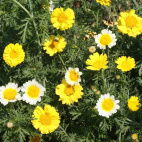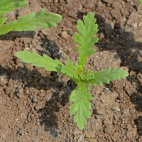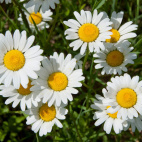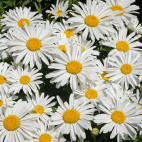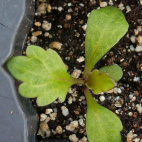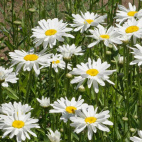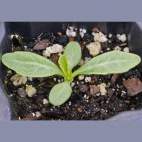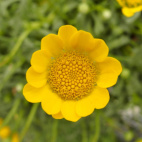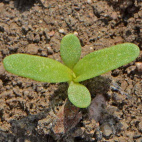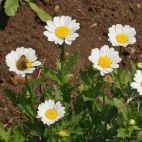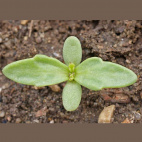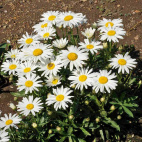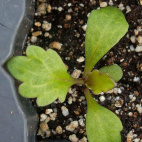Painted Daisy Seeds
Chrysanthemum carinatum
- HOW TO GROW
- FAST FACTS
HOW TO GROW
Sowing: After the last frost of spring, direct sow Chrysanthemum Carinatum seeds on the surface of the soil and press down lightly for good soil contact. To start indoors 6-8 weeks before the last frost, sow in a flat and press lightly into the top of lightly moistened soil. Keep the moisture consistent and the temperature around 70 degrees F until germination, which should take place within 14-20 days. When the seedlings reach a height of several inches and there is no chance of frost, transplant them outdoors.
Growing: These plants adapt to many soils, though they appreciate well-drained, evenly moist soil. Water the seedlings regularly until they become established; mature plants also appreciate occasional watering, especially when in bloom. Pinch back the tips of the developing plants for healthy, bushy foliage. For the longest blooming, remove the spent blossoms. To survive the winter, these plants must remain in soil that drains well.
Harvesting: Daisies make long lasting fresh flowers; cut the stems long and place them in water immediately.
Seed Saving: Late in the season, allow the blossoms to fully mature; when the centers turn brown, cut them off and spread them out to dry away from direct sunlight. After about two weeks or when the heads have fully dried, rub them lightly to separate the seed from the husks. Store painted daisy seeds in a cool, dry place.
FAST FACTS
Common Names: Tri-Color Chrysanthemum, Chop-Suey Greens, Shungiku
Latin Name: Chrysanthemum carinatum
Species Origin: Northern Africa
Type: Garden Flowers
Life Cycle: Annual
USDA Zones: 1, 2, 3, 4, 5, 6, 7, 8, 9, 10, 11, 12
US Regions: California, Mountain, Arid/Desert, Plains/Texas, Midwest, Northern, Northeast, Southeast
Seeds per Ounce: 12,000
Stratification: No Stratification
Germination Ease: No Stratification
Sunlight: Full Sun, Part Sun
Height: 24 Inches
Color: Mixed, White, Red, Yellow, Purple
Bloom Season: Blooms Early Summer, Blooms Late Summer, Blooms Early Fall
Uses: Cut Flowers, Deer Resistant
DESCRIPTION

HOW TO GROW
Sowing: After the last frost of spring, direct sow Chrysanthemum Carinatum seeds on the surface of the soil and press down lightly for good soil contact. To start indoors 6-8 weeks before the last frost, sow in a flat and press lightly into the top of lightly moistened soil. Keep the moisture consistent and the temperature around 70 degrees F until germination, which should take place within 14-20 days. When the seedlings reach a height of several inches and there is no chance of frost, transplant them outdoors.
Growing: These plants adapt to many soils, though they appreciate well-drained, evenly moist soil. Water the seedlings regularly until they become established; mature plants also appreciate occasional watering, especially when in bloom. Pinch back the tips of the developing plants for healthy, bushy foliage. For the longest blooming, remove the spent blossoms. To survive the winter, these plants must remain in soil that drains well.
Harvesting: Daisies make long lasting fresh flowers; cut the stems long and place them in water immediately.
Seed Saving: Late in the season, allow the blossoms to fully mature; when the centers turn brown, cut them off and spread them out to dry away from direct sunlight. After about two weeks or when the heads have fully dried, rub them lightly to separate the seed from the husks. Store painted daisy seeds in a cool, dry place.
FAST FACTS
Common Names: Tri-Color Chrysanthemum, Chop-Suey Greens, Shungiku
Latin Name: Chrysanthemum carinatum
Species Origin: Northern Africa
Type: Garden Flowers
Life Cycle: Annual
USDA Zones: 1, 2, 3, 4, 5, 6, 7, 8, 9, 10, 11, 12
US Regions: California, Mountain, Arid/Desert, Plains/Texas, Midwest, Northern, Northeast, Southeast
Seeds per Ounce: 12,000
Stratification: No Stratification
Germination Ease: No Stratification
Sunlight: Full Sun, Part Sun
Height: 24 Inches
Color: Mixed, White, Red, Yellow, Purple
Bloom Season: Blooms Early Summer, Blooms Late Summer, Blooms Early Fall
Uses: Cut Flowers, Deer Resistant
Also Consider These:
-
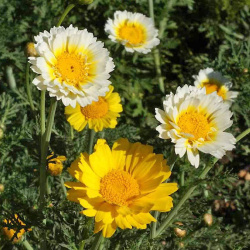 On Sale!
Garland Daisy Seeds
Chrysanthemum coronarium
Quick View
x
On Sale!
Garland Daisy Seeds
Chrysanthemum coronarium
Quick View
xGarland Daisy Seeds
Starting at $3.48 USD -
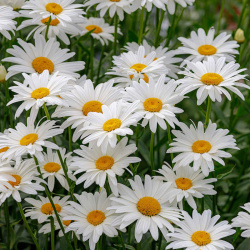 Ox Eye Daisy Seeds
Chrysanthemum leucanthemum
Quick View
x
Ox Eye Daisy Seeds
Chrysanthemum leucanthemum
Quick View
xOx Eye Daisy Seeds
Starting at $2.98 USD -
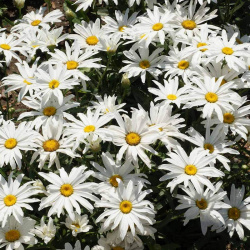 On Sale!
Dwarf Shasta Daisy Seeds
Chrysanthemum maximum
Quick View
x
On Sale!
Dwarf Shasta Daisy Seeds
Chrysanthemum maximum
Quick View
xDwarf Shasta Daisy Seeds
Starting at $3.48 USD -
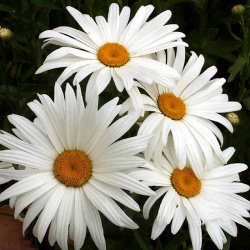 On Sale!
Alaska Shasta Daisy Seeds
Chrysanthemum maximum
Quick View
x
On Sale!
Alaska Shasta Daisy Seeds
Chrysanthemum maximum
Quick View
xAlaska Shasta Daisy Seeds
Starting at $2.98 USD -
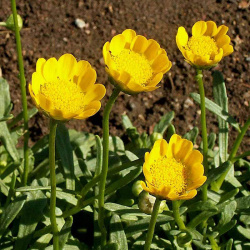 Yellow Daisy Seeds
Chrysanthemum multicaule
Quick View
x
Yellow Daisy Seeds
Chrysanthemum multicaule
Quick View
xYellow Daisy Seeds
Chrysanthemum multicaule
Turn a rock garden into gold with these bright blossoms. The trailing plant also makes a stunning addition to hanging baskets or containers. It is an annual that readily reseeds itself.
Starting at $3.48 USD -
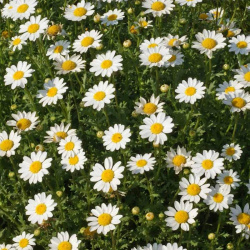 Creeping Daisy Seeds
Chrysanthemum paludosum
Quick View
x
Creeping Daisy Seeds
Chrysanthemum paludosum
Quick View
xCreeping Daisy Seeds
Starting at $3.48 USD -
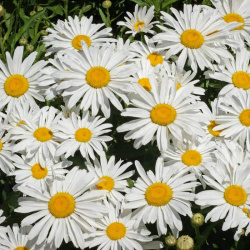 On Sale!
Silver Princess Shasta Daisy Seeds
Chrysanthemum maximum
Quick View
x
On Sale!
Silver Princess Shasta Daisy Seeds
Chrysanthemum maximum
Quick View
xSilver Princess Shasta Daisy Seeds
Starting at $3.48 USD







